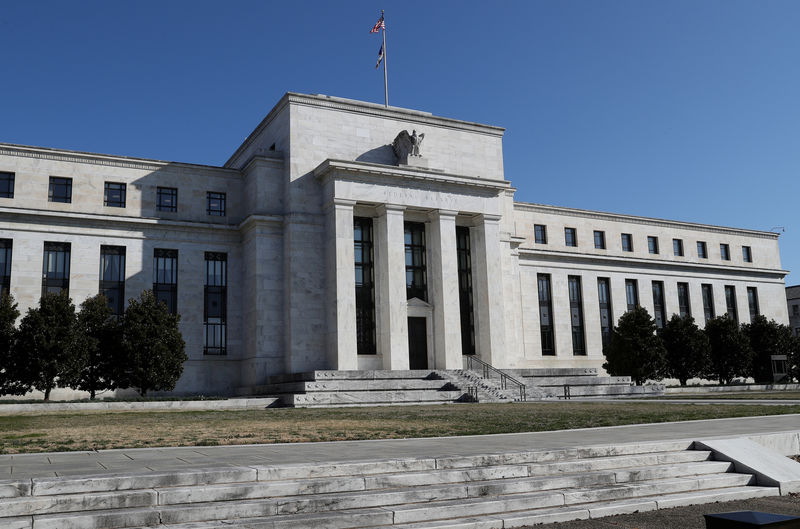By Ann Saphir
SAN FRANCISCO (Reuters) - The bar for cutting U.S. interest rates may get a little lower next year when a new crop of central bankers rotate into voting spots on the Federal Reserve's policy-setting panel as part of its annual membership reshuffle.
The four regional Fed bank presidents gaining a vote on interest rates starting in January are slightly less hawkish overall than the four they replace, a review of public comments and voting records shows.
Fed Chair Jerome Powell has said that after three rate cuts this year, only a "material" change to the economic outlook could trigger a further reduction. When they meet next week for the last time this year, policymakers are expected to leave rates in the current range of 1.5% to 1.75%.
Next year will be a different story, says Oxford Economics' Gregory Daco, who expects a cooling economy, sub-2% inflation and persistent trade tensions to force a reassessment of the Fed's outlook in the early part of the year. Also making a rate cut more likely, he said, is that starting in January, rate-setters will be a "slightly more dovish group that is likely to favor more easing in the event of a deteriorating outlook."
To be sure, Daco and others said, the voting lineup is far from determinative.
All 17 Fed policymakers participate in two days of discussions that precede each final rate-setting vote by 10 of them, and non-voters can exert considerable influence during that time. Partly because voters do rotate every January, policymakers tend to favor compromise and consensus.
(For a graphic on Fed policymakers' voting records, views and take on the economy, please see https://tmsnrt.rs/38ctFOI)
HAWKS AND DOVES
Even among voters, the differences are subtle.
Both hawkish dissenters against this year's three interest rate cuts - Boston Fed President Eric Rosengren and Kansas City Fed President Esther George - rotate out of the voting lineup after next week's meeting.
Chicago Fed President Evans, who supported the rate cuts, also drops off the voting roll, as does St. Louis Fed President James Bullard, who used his vote in 2019 to signal support for even steeper rate cuts than the Fed delivered.
Rotating in are Cleveland Fed President Loretta Mester, who opposed all three rate cuts, and Philadelphia Fed President Harker, who went along with the first rate cut but opposed the other two. Joining them will be Dallas Fed President Robert Kaplan, who backed the 2019 rate cuts, though in October it was on condition the Fed made it clear no more were likely unless conditions worsen.
The fourth new 2020 voter, Minneapolis Fed President Neel Kashkari, is arguably the most dovish among all Fed policymakers. Like Bullard, he wanted a bigger rate cut than his colleagues in 2019, but he also proposed the Fed promise not to raise rates until inflation reaches 2% on a sustained basis.
"On net, the committee will be slightly less hawkish," said Michael Brown, principal U.S. economist for Visa (NYSE:V), meaning voters could be more open to rate cuts than otherwise.
But, he added, "I am not sure it matters much," because Fed policymakers will, in the end, react to economic data.
Consumer spending bolstered by strong jobs growth has propelled the U.S. economy despite a decline in business spending and a drop in manufacturing output as the U.S.-China trade war continues.
Should that pillar of growth show signs of weakening, Brown said, Fed voters won't be the only ones on board with easing.

"I think you would get a broad consensus to cut rates as needed," he said.